
Total Pageviews
Thursday 23 January 2014
Microsoft moved 3.9 million Xbox Ones, while Surface sales soared

Korg Gadget packs 15 synthesizers and drum machines into an iPad app

Pinterest adds the ability to play GIFs, makes your boards much more interesting

Google's ready to give away over $2.7 million to folks that hack Chrome OS successfully
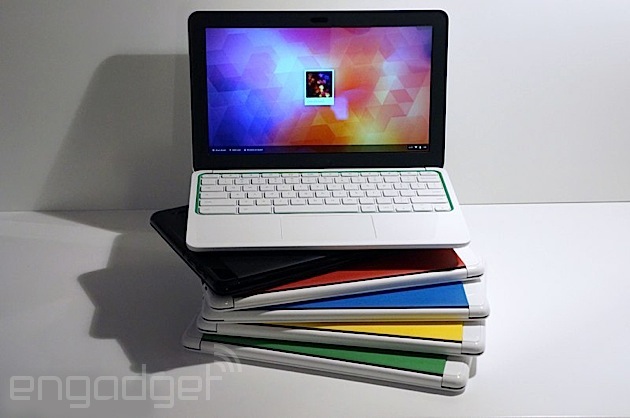
Android's Favorite Keyboard Could Be Coming to iOS

Temiendo a la tecnología desde 1494
Esos inventos diabólicos (clic para ver entero)
Parece que desde siempre la aparición de una nueva tecnología ha traído consigo los peores pronósticos, tal y como se puede ver en esta ilustración .
Unas cuantas de las «perlas» que se pueden leer en ella:
- En 1545, apenas 60 años después de la invención de la imprenta, demasiados libros puede confundir y dañar el cerebro.
- En 1775, el cada vez más popular periódico puede representar el peligro de tener a muchos ciudadanos aislados mientras leen en silencio.
- En 1881, el neurólogo George M. Beard se teme que los periódicos y el telégrafo vayan a crear problemas mentales en la gente al exponerlos a las penas de otras personas.
- En 1900, el teléfono te puede dejar sordo y la electricidad que usa… ¡Matarte!
- En 1920, la radio causará la desaparición de las conversaciones al ser sustituidas por el tremebundo jazz.
- En 1950, la televisión «dañará la radio, las conversaciones, la lectura, y la vida familiar».
Etc…
via Microsiervos http://ift.tt/1l2blg0
TiVo's Hardware Unit Is Not Dead

OnePlus One will see international availability next quarter, feature '2014 flagship specs'

Tiny power plant can charge a pacemaker through heartbeats
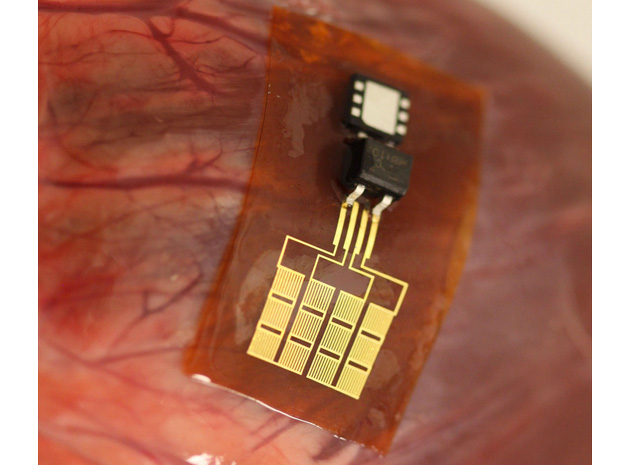
Google's voice search could soon be baked into Chrome, no extension required
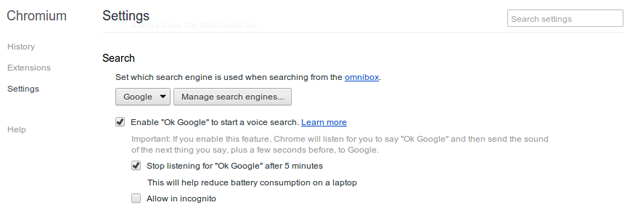
WSJ: Apple considering two iPhones with larger screen sizes and all-metal casings
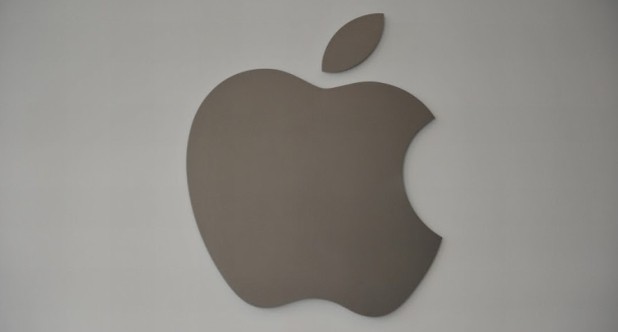
iRig Mic HD brings a handheld option to iOS and Mac recording for $99
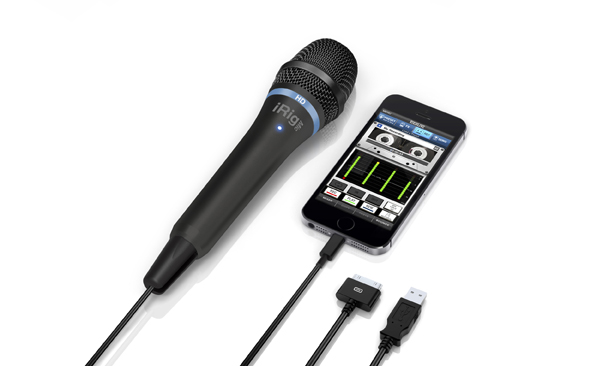
One of the rarest games in the world just landed on eBay
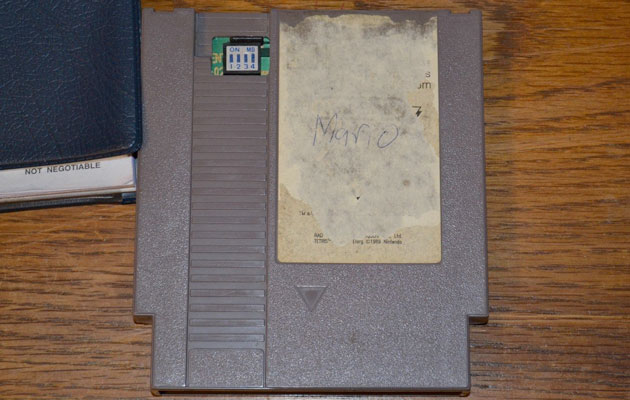
8 Vintage Mac Reviews That'll Make You Appreciate Modern Tech

StackSocial Brings Its Tech-Focused E-Commerce Platform To The iPhone
StackSocial, a startup offering deals on and early access to gadgets, apps, and other tech-related products, is making its move onto mobile with the launch of its iPhone app.
The company runs its own direct-to-consumer e-commerce site, but it also partners with publishers like Gizmodo, CNET, and AOL (which owns TechCrunch) to integrate commerce onto their properties. And while it isn’t releasing exact revenue numbers, it says that revenue grew 250 percent over the past year to “an eight-figure annualized run-rate”. It also says its publisher network reaches 50 million visitors each month, and that the top publishers in the network saw seven-figure sales in 2013.
The app, meanwhile, offers a similar experience on the iPhone as the consumer site. I was surprised that it took the startup, which was founded in 2011, more than two years to launch its first smartphone app, particularly given its focus on reaching “tech early adopters.” Mikey Lee, a content strategist at the company (and someone I worked with a million years ago at The Stanford Daily), told me that StackSocial had been largely focused on developing its publisher platform and bringing on more partners.
“In 2013, we saw a very organic rise in our user numbers and revenue to the StackSocial.com marketplace, and as a result, we decided to hone in on how we could address the needs of those users,” he said. “Mobile became a clear priority, as we saw mobile traffic doubling as an overall [percentage] of traffic to 1/3 of all traffic.”
In the app press release, founder and CEO Josh Payne says iPad and Android apps are coming this year as well.
This seems to be one of those “launches” where the company releases the app on the App Store a little ahead of time, but it wasn’t publicizing the release until now. Anyway, you can download the StackSocial app here.
via TechCrunch » Startups http://ift.tt/1aOVvvf
Samsung's all-but-official Galaxy Note 3 Neo won't be released in the US or UK
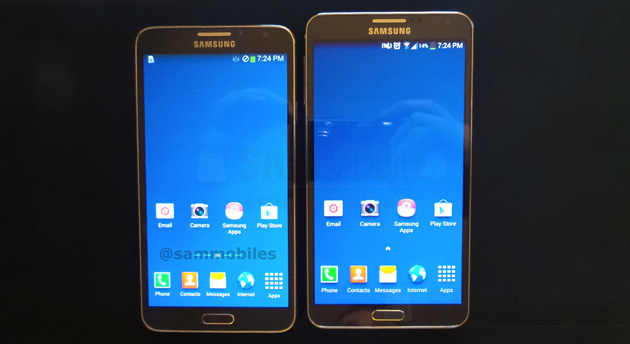
Pope Francis sees the internet as a blessing for communication

Maingear Pulse 17 review: portability, paint and power come at a hefty price
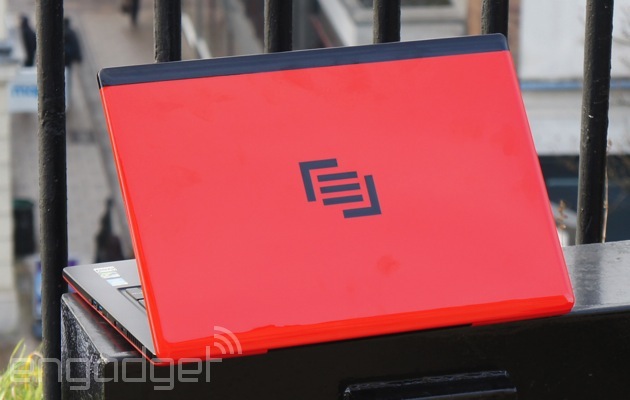
Sony gets into genetic analysis with aim of helping docs pick better treatments

Zidisha Launches A Kickstarter-Style Micro-Lending Platform For Low-Income Entrepreneurs In Developing Countries
When it comes to lending and borrowing money, banks have long been at the center of the equation. However, with the proliferation of new information technologies, mobile devices and the good old Web, new methods of borrowing and lending have emerged that are slowly toppling the bank-centric model. The best and most promising example is peer-to-peer lending, which leverages technology to directly match those who need money with those who have money to invest, while cutting out the middle man.
By enabling the efficient flow of capital across international boundaries and wealth divisions, and by allowing lenders to connect with and send money directly to borrowers, peer-to-peer micro-lending has the ability to have an enormous impact — on a global scale. However, while a handful of organizations and institutions have attempted it, direct P2P lending across international wealth divides has never been done before at scale, says Julia Kurnia.
So Kurnia decided to change that. In 2009, she founded Zidisha, a non-profit organization dedicated to bringing direct, P2P lending to low-income entrepreneurs in developing countries. Without much of a roadmap to follow, Zidisha has spent the intervening years plotting its course, slowing developing a micro-finance model that could work at scale — through good old-fashioned trial and error.
Fast forward four years, and the micro-finance platform is finally ready to make its public debut. Having put the finishing touches on its peer-to-peer lending model at Y Combinator — where it became the accelerator’s second non-profit graduate — Zidisha is launching today with an exciting value proposition. The startup considers itself to be the first true direct, peer-to-peer lending platform, enabling anyone and everyone to send micro-loans to budding entrepreneurs in the developing world.
Exciting as that idea may be, to many, Zidisha’s model may appear at first glance to just be another Kiva clone. Yet, what’s so cool about Zidisha is that, unlike other micro-finance programs or companies, the platform offers users the ability to interact directly with its entrepreneurs. Not only that, but what truly differentiates the startup from organizations like Kiva is that Zidisha doesn’t rely on field partners to distribute its loans to entrepreneurs.
In fact, although many micro-finance platforms generally have their heart in the right place, they present entrepreneurs in developing nations with a nagging problem. The average global interest and fee rate charged by their third-party intermediaries (or field partners) is 37 percent and, in some markets, can be as high as 70 percent. Even those micro-finance organizations on the ground who receive 0 percent-interest loans from Kiva can charge an average interest and fee rate of 35 percent.
Again, generally speaking, these rates are high for an understandable reason: It’s not cheap for these organizations to develop and maintain a physical presence in these developing markets. Of course, those high operation costs mean high fees and a bum deal for local entrepreneurs, as the fee rates ultimately prevent them from growing their earnings enough (in relation to the cost of their loans) to have a real impact on their quality of life, and their family’s standard of living.
To offer both entrepreneurs and lenders a more affordable alternative, Zidisha’s offers an average interest and fee rate between 5 and 9 percent, which Kurnia says simply goes toward covering the cost of transferring the loan. To help cover its operational costs, Zidisha makes it easy for lenders to make donations directly to the organization itself and by providing a way to leave tips when making a loan, for example.
Taking a page from Watsi’s book — itself a fellow Y Combinator grad — Zidisha’s platform allows lenders to post questions and comments while interacting with the entrepreneur, who, in turn can share progress reports and updates on the growth of the business. This allows entrepreneurs to connect directly with the investor and to actually develop a relationship, through which lenders have an opportunity to actually see the impact their micro-investing provides.
Zidisha also attempts to provide additional incentive by ensuring that 100 percent of its lender’s investment is disbursed directly to the borrower’s business. The platform also allows lenders to set their own interest rates, which are paid back in weekly installments.
But the real key, Kurnia says, and what makes Zidisha unique in the world of micro-finance is that the platform has been designed in such a way as to remove any trace of those pesky intermediaries. Not only do borrowers communicate directly with lenders as their business investments grow, but the borrowers themselves are the ones who post their loan applications.
When Zidisha does work with third parties, it’s to provide the kind of technological support and web and mobile networks that enable the company to provide its services to local entrpreneurs. In fact, it’s these services that can help further reduce the barriers between borrowers and lenders by providing the ability to do local credit checks and verification, offer low-cost electronic money transfers and independent tracking of borrower performance. But that’s the extent of it, the founder says. After that, Zidisha aims to get out of the user’s way to let them begin interacting directly with borrowers.
Today, the startup is working with 3,100 lenders from eight countries — including Benin, Burkina Faso, Guinea, Indonesia, Kenya, Mali, Niger and Senegal — and, with its launch behind it, plans to begin expanding that roster in the coming months. Thus far, $1.6 million in loans have been given directly through it’s platform to 3,700 borrowers. Meanwhile, the average interest rate is 4.6 percent over a four-year time span and the average default rate is a lowly 8 percent.
Finally, when we talk about the true potential for direct, peer-to-peer lending to have a big impact at a global scale, the founder says, it’s important to remember that the frequently restrictive political and economic conditions these entrepreneurs are working mean that it’s expensive for local banks to lend to small business owners.
It’s no surprise then that many of the borrowers work with micro-finance institutions. However, Kurnia explains that individual business expansion loans often carry prohibitive collateral and interest requirements due to the institutions’ high administrative costs. Zidisha wants to remove these barriers and provide borrowers with access to loans that allow them to retain a greater share of their income and better support their families as a result.
To avoid high operational costs and offer better terms for borrowers, Zidisha’s staff of fifty is comprised almost totally of volunteers, who take charge of the startup’s operations, whether it’s reviewing borrower applications, disbursing loans, registering repayments or answering queries. In this respect, the Zidisha founder tells us, the company is similar to Wikipedia. In other words, it’s a social good-focused, online community run almost exclusively by volunteers.
Again, while organizations like Kiva continue to dominate most of the mindshare in this market, startups like Zidisha are working to create a forum in which a blogger working from San Francisco could potentially encounter and actually befriend remarkable social entrepreneurs who live in some of the world’s most remote and impoverished places. But, in the end, if the platform succeeds it’s because it will have created an experience that doesn’t just collect loans, but “collects biographies,” to quote one of the site’s lenders.
Whether it’s a saleswoman from the war-torn Casamance region in West Africa, who “gets up at four in the morning to read Dale Carnegie books,” the founder says, or an entrepreneur who is starting a computer training school in a Nairobi slum, the stories are sure to put your own in perspective and leave you with a feeling that, finally, technology is being used to actually help people — not just make sharing your photos that much easier.
Sites like Watsi and Zidisha are putting the days of “adopting a child” or family in a developing country, where all you received was a picture or a small brochure, with no sense of where your investment was going or what it was actually being used for. In other words, they’re making giving (or lending) a lot easier to do and far more rewarding.
via TechCrunch » Startups http://ift.tt/KLfCU2
Huawei pays off Apple and Microsoft-led consortium in Android patent spat

Las marcas de discos duros que son más o menos fiables según Backblaze
Fallos anuales (%) que requieren cambiar los discos duros.
Con casi 30.000 discos duros convencionales de las marcas Seagate, Hitachi, Western Digital, Toshiba y Samsung —con distintas capacidades y velocidades de giro— funcionando en sus máquinas, Backblaze Storage Pod ha publicado datos sobre la fiabilidad de las unidades según la cantidad de veces que se ven obligados a cambiar los discos al cabo de un año.
Así que según Backblaze la más fiable en sus circunstancias es Hitachi y la menos fiable es Seagate. De marcas como Toshiba o Samsung consideran no tener unidades suficientes como para obtener datos en igual proporción.
Aunque hay diferencias notables en sus datos, «después de tres años funcionando ininterrumpidamente, la inmensa mayoría de los discos duros siguen operativos.»
La moraleja es que da un poco igual qué disco duro tengas ahora funcionando, pero si tienes ocasión de elegir entre uno u otro tal vez su post te ayude a decidirte.
Lo cuentan y exponen todos los datos, con todo detalle, en What Hard Drive Should I Buy? , vía Life Hacker.
via Microsiervos http://ift.tt/LYy39m
12 Sneaky Easter Eggs Hiding in Your Mac

Snapchat Security Defeated in 30 Minutes and Other News You Need to Know

Estately Brings Its Real Estate Search To iPhone After Doubling Its Revenue And Traffic In 2013
When you think of online and mobile real estate sites, Zillow and Redfin are probably the first names that come to mind. Seattle-based Estately, however, has been quietly growing in the shadow of these larger companies, and the 17-person company doubled both its revenue and site traffic in 2013. Now, it hopes to continue to build on this momentum with the release of its first mobile app.
Estately for iPhone, which is launching today, is a pretty late entrant to the mobile real estate game. Zillow, Redfin, Trulia and others have long offered mobile apps. As Estately CEO and co-founder Galen Ward told me earlier this week, the company’s focus has long been on running a very lean startup, and the team didn’t want to divert resources away from its efforts on the web. Ward also argues that waiting for iOS 7 allowed his company to more easily build the kind of native app the team wanted to build.
Estately expanded to 30 additional markets last year, bringing its total to 70. Unlike some of its competitors, it has direct access to MLS listings in most areas. To do this, the company had to set up offices in many states, but in return, it can notify users within 15 minutes when a new house comes on the market because it has full access to the same information regular real estate agents have.
Ward told me that the new app is meant to be “super easy to use.” There are no slide-out menus and everything was designed to streamline the process as much as possible. Because it is an iOS 7-only app, the team was able to easily create animations for when users favorite a house and perform other actions in the app. The app, Ward said, should “feel alive and like something that people want to touch.”
As for other platforms, Ward told me that the team doesn’t have any plans to expand beyond iOS right now. Instead, the company plans to deepen its investment in iOS (maybe with a dedicated iPad app) before it goes broad.
Estately is playing in a very competitive market, but even without a clear mobile strategy, the company has done well over the last year. To remain competitive in the long run, though, it definitely needed this mobile app, so it will be interesting to see how this will influence the company’s growth over the course of this year.
via TechCrunch » Startups http://ift.tt/1l1fVuP
Honda develops braking system for early pedestrian detection

Los motores de Fórmula 1 dejan de ser «motores»
Renault ha dado a conocer los motores nuevos para la Fórmula 1, que este año tendrá configuración V6 con turbo y 1,6 litros de cilindrada —la temporada pasada eran motores V8 de 2,4 litros, sin turbo.
En Wired, An Illustrated Guide to F1′s Radical New Engine
Los motores sufren un cambio tan radical que, de hecho, desde Fórmula 1 insisten en que no son motores; son unidades de potencia.Como nombre propio: Unidad de Potencia.
Que lo llamen como quieran. Nosotros lo llamaremos alucinantes. Con 760 CV esta unidad de pot... este motor con turbo e híbrido eléctrico no es sólo el más avanzado en el mundo, también es uno de los más eficientes.
También lo cuentan en Los secretos del motor Renault de Fórmula 1 2014: Energy F1,
El objetivo es que estos nuevos motores de F1 sean tan rápido como los anteriores pero consuman un 30% menos de combustible.
via Microsiervos http://ift.tt/KKQxZE
